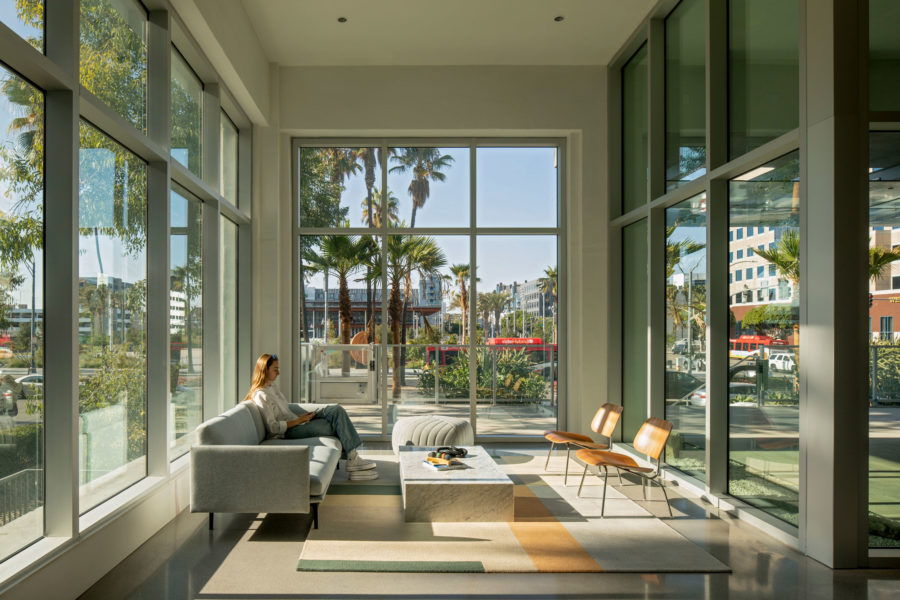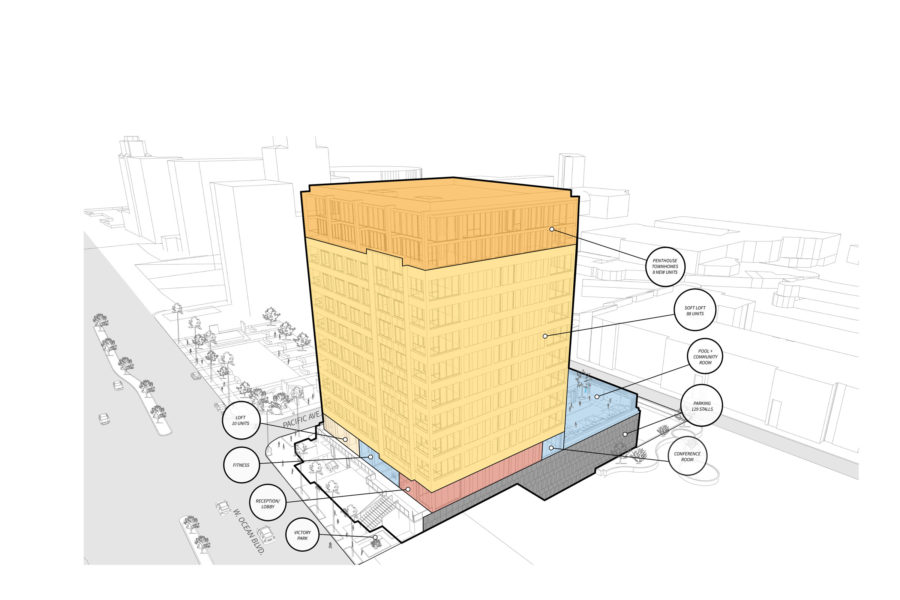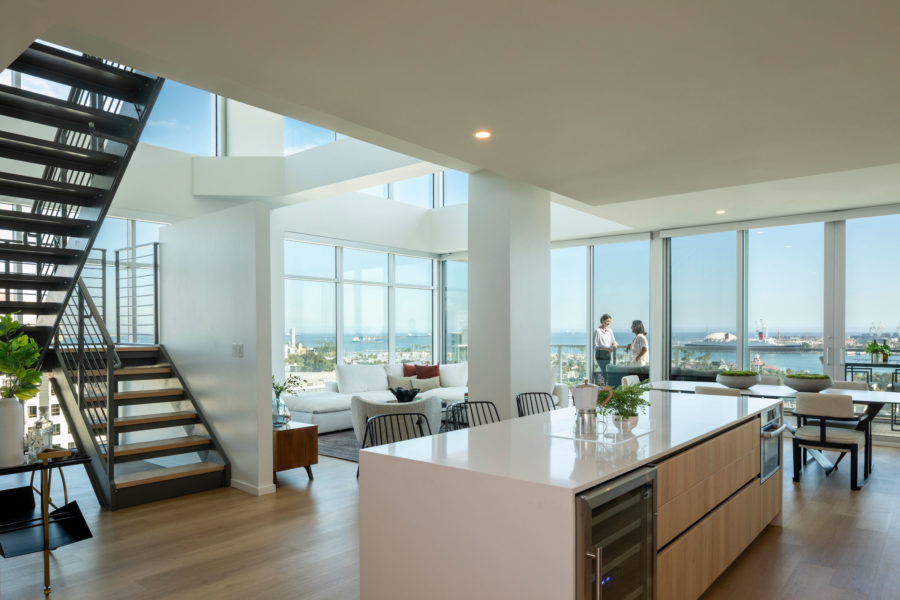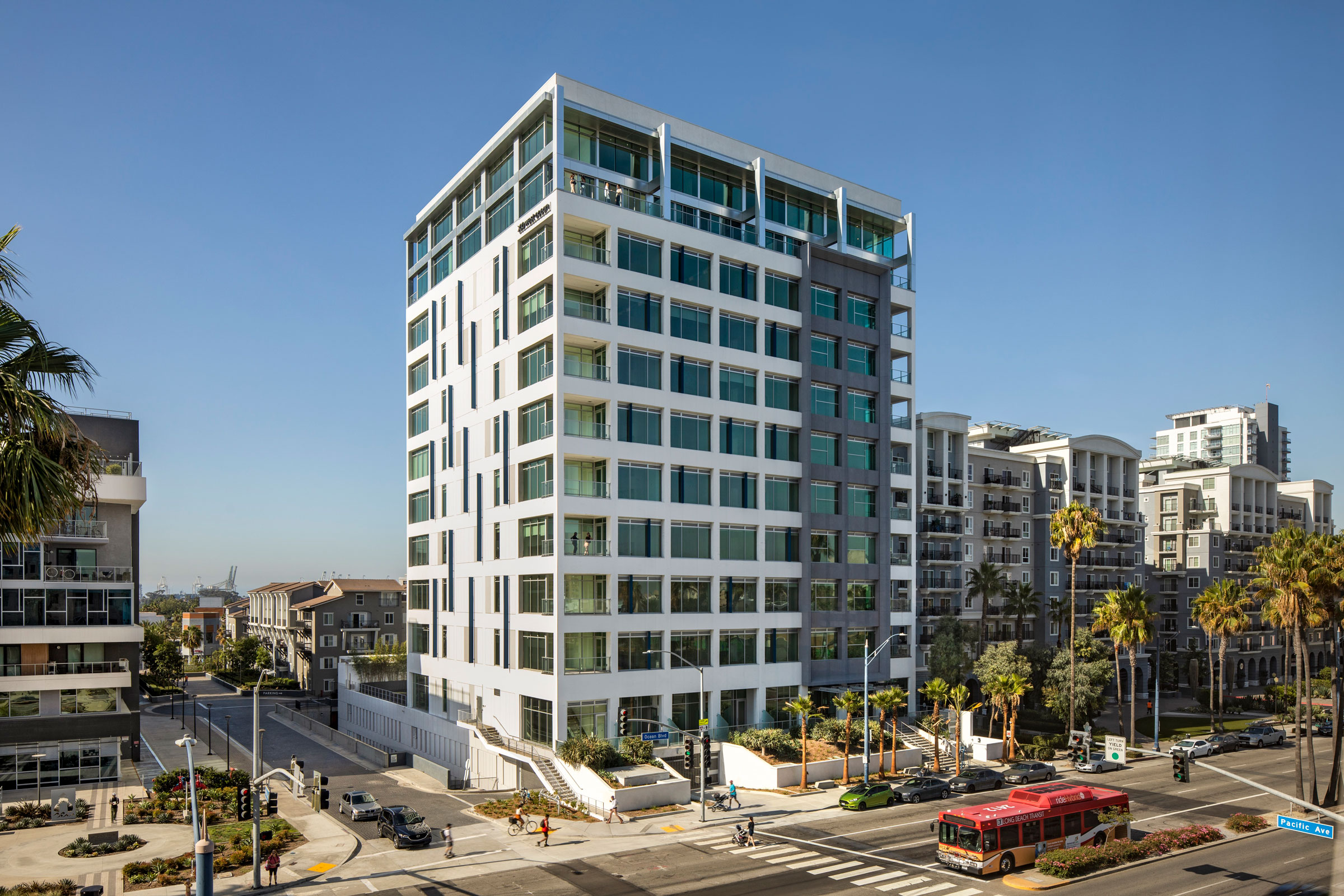Story at a glance:
- Adaptive reuse of an underperforming Class B office building into market rate residential units in a transit-oriented and burgeoning community
- Lowered embodied carbon, reduced emissions, and millions of pounds diverted from the waste stream
- Creative design affords varied unit typologies and modern living spaces
The supply of housing at all levels across the US and in California in particular has not kept pace with demand. As part of a multi-pronged approach to addressing the problem, California has added incentives to encourage developers to convert underutilized office space into housing, setting aside hundreds of millions of dollars. The office market has weakened nationally due to the pandemic, allowing remote-work policies with office attendance currently at less than 45%. Office to residential conversion may not solve the demand for housing entirely, but it is considered to be an important sustainable piece of the puzzle to addressing the shortage.
The seemingly impenetrable structure at 200 W. Ocean in Long Beach was known as Verizon’s headquarters in the region. Originally designed by AC Martin and Associates in 1967, this Class B building was commissioned by the General Telephone Company of California—the largest independent telephone company in the US during the days of the Bell System—to serve as the headquarters for the southern region.
The Task

Photo by Paul Turang
Studio One Eleven was commissioned to repurpose this ocean-view building as market rate housing, and set out to make the most of the building’s existing bones while at the same time breaking from its past.
The design pays homage to the building’s mid-century architectural history but introduces renewed vibrancy with contemporary touches. The original building felt insular with an imposing facade and dark windows, so the renovation sought to reverse this relationship with the urban fabric and to invite views and connectivity.
How We Did It

Image courtesy of Studio One Eleven
The addition of a gray vertical frame over the entry accentuates the building’s presence on Ocean Boulevard. To capitalize on the views and \ allow more natural daylighting, Studio One Eleven doubled all existing windows in size and cut slots in the concrete bulkhead to make them larger. The outdated rooftop mechanical equipment was removed, and two new stories were added to give the building an iconic appearance, further establishing the identity 200 Ocean within the burgeoning downtown community over which it presides.
By drastically changing the floor plans and changing the massing of the building, carving outdoor balconies and terraces from the facade of the building, Studio One Eleven was able to create voluminous, varied, and light-filled units that each have access to the outdoors. The new residential units will have exposed concrete walls in the corridors, tall ceilings, and many with balconies with either ocean or city views.
Overall, lower units feel connected to the street while upper units are connected to views. Utilizing the tall ground floor, Studio One Eleven created double height lofts with mezzanines and floor to ceiling windows. On the top floors inbound townhome units feature interior atriums, created by carving openings in the roof and allowing for interior bedrooms to have direct access to natural light and ventilation. Above the fourth floor, residents have unobstructed views southward over the waterfront, Queen Mary, and Catalina Island beyond, and northward toward downtown LA and the San Gabriel mountain range beyond. By strengthening part of the parking structure roof, Studio One Eleven was able to add an expansive ground floor amenity deck that features a pool deck and spa, community rooms, and a barbecue area for residents.
The Results

Photo by Paul Turang
Minimizing the overall quantity of material used in a building, especially high-embodied-carbon materials like concrete, steel, and petrochemical-based insulation products, can significantly reduce the overall embodied carbon of a project.
By reusing the existing building for a new purpose, the project results in 69% lowered embodied carbon and 3.19M Kg CO2e emissions avoided, as well as more than 26 million pounds diverted from the waste stream. All glazing was updated to improve thermal performance and views for residential use.



